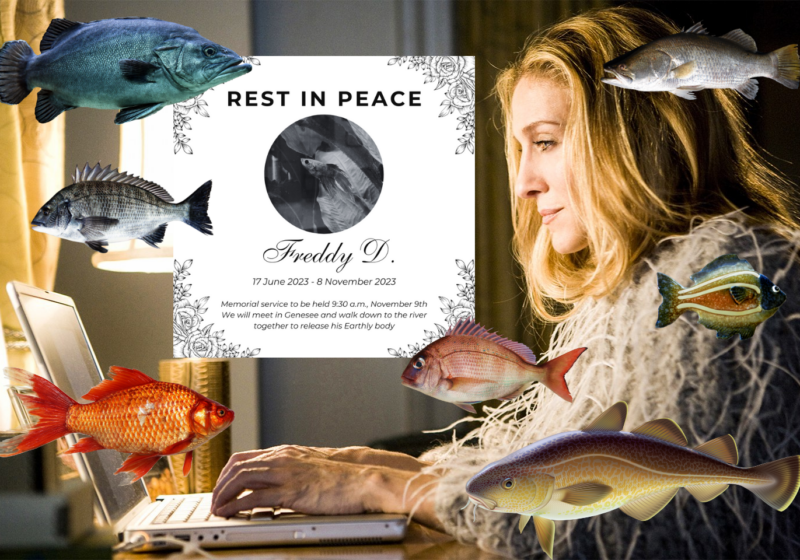As humanity nears the end of February, we all collectively recall our New Year’s resolutions, which we all so determinedly set and so conveniently forgot. I like to believe there exists a bell curve of the way people behave during the first two months of the New Year.
Perhaps you let your resolutions linger in your head too long, like leaving bread out on the table to turn dry, crumbly, and tasteless. Or maybe you began to write them down on the ol’ pen and paper (bonus points for you!) before your wrist gave out and your brain gave up (bonus points revoked!). To those of you who at least adjacently fit within these descriptions, you sit snugly in the lower minority of this giant bell curve of the human race, and this article is not for you! Now scuttle along before I leave you too inspired. And the same could be said for those in the upper minority, who also might have better things to do than read the CT: Scram!
To those lost in the majority, however, this is for you. If you’re unsure, let me illustrate to you what “mid” might look like and see if any of this resonates with you.
You’ve been twiddling your fingers all winter break, letting your dreams fizzle away to wherever your other “brilliant” ideas wander to. Until New Year’s comes around and you snap right out of it, determined to finally do something with your life. Inspiration strikes the paper and sparks fly out of your pen as you scribble down the ultimate plan of ambition and you say to yourself, “This marks the day of change.” And surprisingly enough, you stick with it; in fact, you haven’t missed a beat.
But now we’re here, wondering, how did we get this close? Well, just take one look at this ultimate plan of yours and you’ll see: wake up at 5 a.m., run three miles, practice piano for four hours, draw for five days. Rinse and repeat for six years. Do you hear how ridiculous you sounded, back when “inspiration struck the paper” and “sparks flew out of your pen?” Motivation is an interesting thing: In the moment, it’s an all-consuming fire and everything you touch seems to burst into flames of aspiration; though when this seemingly undying fire dies down, you realize it was all only the scent of a lit candle, eventually to be blown out. In short, it doesn’t do anything. What this sugar rush does do, however, is make us irrationally hopeful, scratching the incessant itch that exists within us all, whispering, “You’re running out of time.”
Our world often stresses efficiency above all, and it’s admittedly difficult not to fall under this mindset. At the peak of our motivation — when we most want to turn things around for the better — our excitement for this desired future spills over. This, coupled with acknowledgment of our previously unproductive life, causes us to instinctively sprint towards our goal, as if we need to make up for all the years of progress lost to procrastination. But even as we run from our past selves, we fall short once we realize the finish line is beyond years away, and our rushed pace is nothing but a one-way ticket to burnout.
I like to view this problem under the lens of speedrunning. If you’re unfamiliar with the term, it’s a sector of the gaming space dedicated to completing video games in record time. In this determination to do so, players discover bugs and glitches that dramatically cut down time, sometimes skipping through cutscenes, levels, or — in some cases — the entire game. It truly is a beautiful aspect of gaming that finds players pushing the limits of both the game and themselves.
The truth is, though, the concepts of speedrunning cannot be applied in a practical sense, and it only takes a shift in perspective to see this. Say there are two players: One chooses to play a game at their own pace while the other prepares for a single speedrun of the same game. If we were to record the time taken for each player to reach the end, from the moment the game begins, the speedrunner would most definitely win. However, if we were to instead begin the timer from the moment they begin preparing for the event, I would have my money on the first player.
In speedrunning, the goal is to complete the game as soon as possible, which is done by endlessly planning out the perfect pathing that guarantees little to no time wasted. But for the first player, and ultimately us, their goal is simply to complete the game and enjoy it, which is accomplished by engaging more thoroughly in the cutscenes, minigames, and difficult bosses that are a part of the experience. So while the speedrunner is able to reach the end, from start to finish, in a shorter period of time, it is wholly outweighed by the enjoyment lost in moving at a rushed pace and the time spent in preparation for this made up competition (this is, after all, a made up experiment).
Similar to the speedrunner, we tend to overthink and overplan the things we care about the most, fixated on creating the perfect schedule that ensures the fastest results. Think of it like constantly rewriting code to get the most optimally quick runtime, when you could quickly write a sub-optimal one instead. Of course, planning is crucial to success (and I now feel inclined to write a piece on this very topic), but an excessive amount of it is simply of bad taste. So, get a routine down first, and only then are you in a position to reflect, critique, and improve upon it later. Put briefly: Sometimes, being efficient is inefficient.






